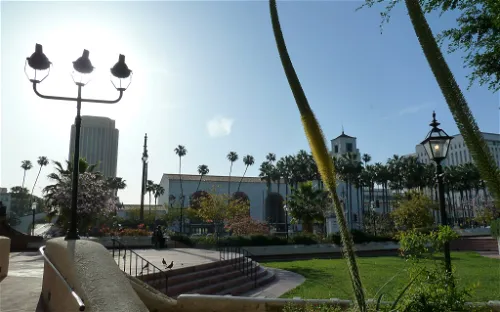El Pueblo de Los Ángeles and its collection
El Pueblo de Los Angeles Historical Monument, also known as Los Angeles Plaza Historic District, is a historic district located in the oldest section of Los Angeles. This area was the city's center under Spanish, Mexican, and United States rule through most of the 19th century. The district was designated a state historic monument in 1953 and listed on the National Register of Historic Places in 1972.
Historic Structures in the District
The district includes the city's oldest historic structures clustered around the old plaza. These buildings of historical significance include Nuestra Señora La Reina de Los Angeles Church, Avila Adobe, the Olvera Street market, Pico House, and the Old Plaza Fire Station. Four of these buildings have been restored and are operated as museums, providing a glimpse into the city's past.
The Plaza: The Heart of the Historic District
The plaza at the center of the Historic District is the focal point of the state historic park, symbolizing the city's birthplace. It remains the site of many festivals and celebrations. The plaza has large statues of two figures in the city's history, including one of Charles III of Spain, the monarch who ordered the founding of the Pueblo de Los Angeles in 1780, and another of Felipe de Neve, the Spanish Governor of the Californias who selected the site of the Pueblo and laid out the town.
History & Anthropology Historic house Religion Religious building
#11 Free museums in Los Angeles #17 History & Anthropology in Los Angeles #13 Historic houses in Los Angeles #5 Religion museums in Los Angeles #1 Religious buildings in Los Angeles #33 Free museums in California #65 History & Anthropology in California #42 Historic houses in California #11 Religion museums in California #3 Religious buildings in California #109 Religion museums in United States #35 Religious buildings in United States

